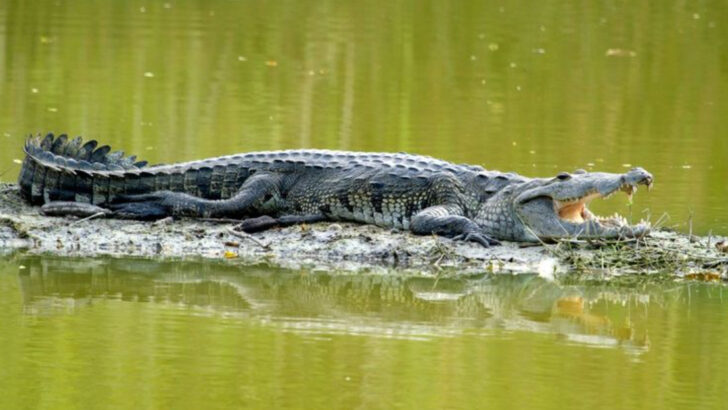Louisiana’s wetlands don’t whisper—they growl.
This is a place where prehistoric beasts still rule. Massive jaws. Armored scales. Eyes that hover just above the waterline, watching your every move.
These aren’t distant relics from a museum. They’re real, alive, and very much at home in the swamps, bayous, and rivers of the South.
From sneaky juveniles to absolute giants that could swallow a wild boar whole, Louisiana is crawling with some of the fiercest reptiles on the planet.
Ready to meet 12 gators and crocs that practically own the wetlands? Let’s wade in. Carefully.
American Alligator
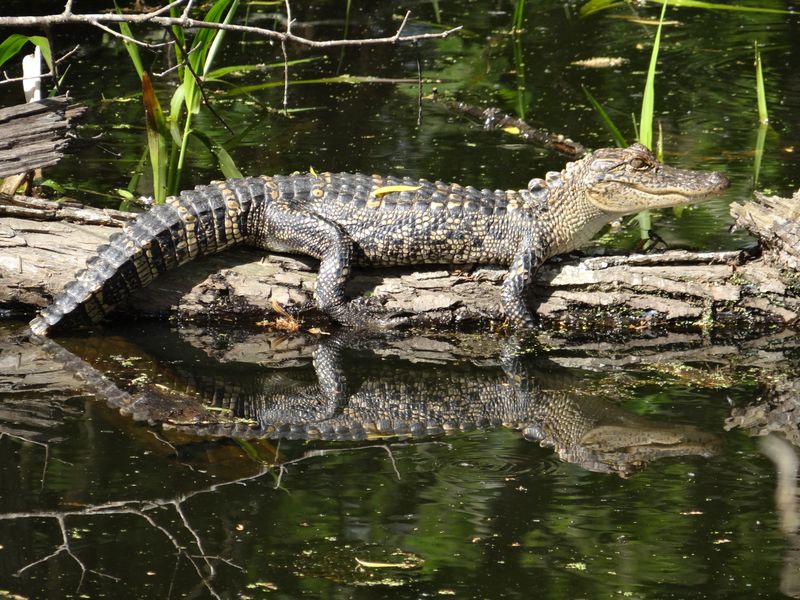
The American Alligator is a notable inhabitant of Louisiana’s wetlands, easily recognizable by its broad snout and armored body. This formidable reptile can grow up to 13 feet long. Picture its wide mouth opening in a lazy yawn as it suns itself on a warm afternoon.
With a diet that includes fish, birds, and small mammals, this reptile plays a crucial role in maintaining the ecological balance. Known for its powerful tail and strong swimming ability, the American Alligator is an apex predator in its native habitat.
Nile Crocodile
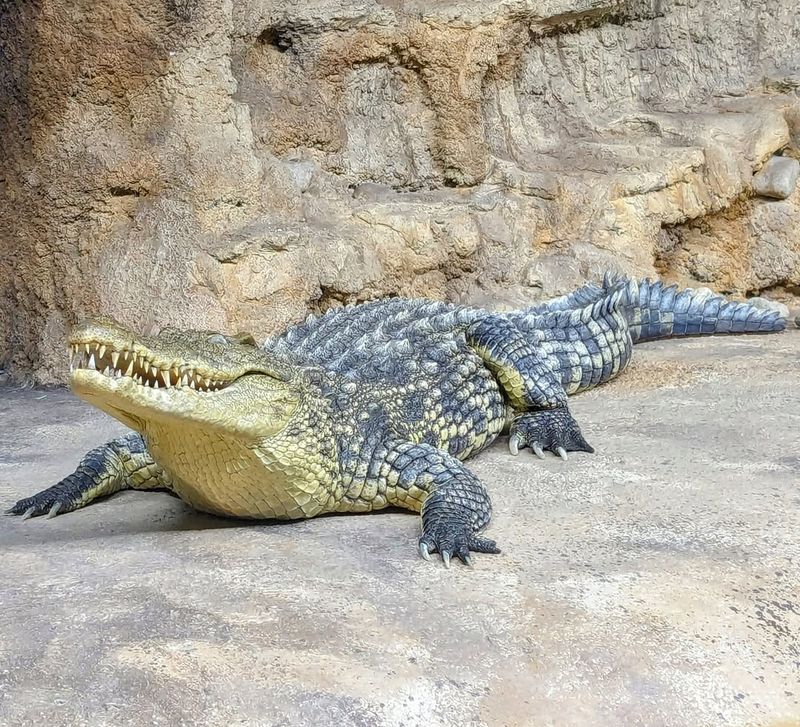
Though not native, the Nile Crocodile has been spotted in Louisiana’s waterways. This reptile, usually found in Africa, is famous for its stealth. Imagine it gliding silently, only its eyes and nostrils visible above the water’s surface.
Capable of reaching lengths of up to 20 feet, the Nile Crocodile is an impressive sight. It’s known for its aggressive nature and keen hunting skills, often surprising prey with sudden bursts of speed. How it arrived in Louisiana remains a mystery, sparking curiosity and concern.
Chinese Alligator
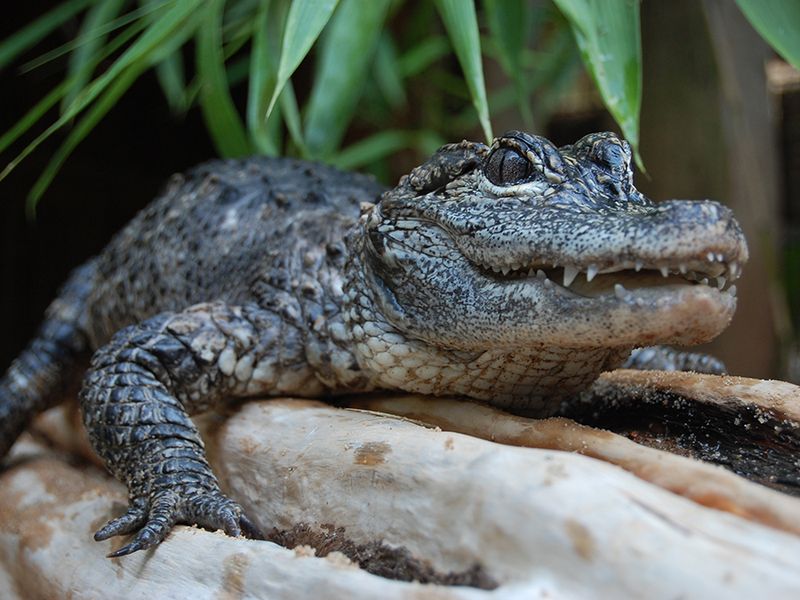
The Chinese Alligator, often smaller in size compared to its American cousin, can sometimes be found in Louisiana’s wetlands. Known for its gentle demeanor, this reptile is usually around 5 feet long, making it less daunting.
Sporting a broad snout and bony plates on its back, it prefers quiet waters. Its diet mainly consists of fish and small invertebrates. Conservation efforts are crucial for this species, as it is considered one of the most endangered alligators in the world.
Morelet’s Crocodile
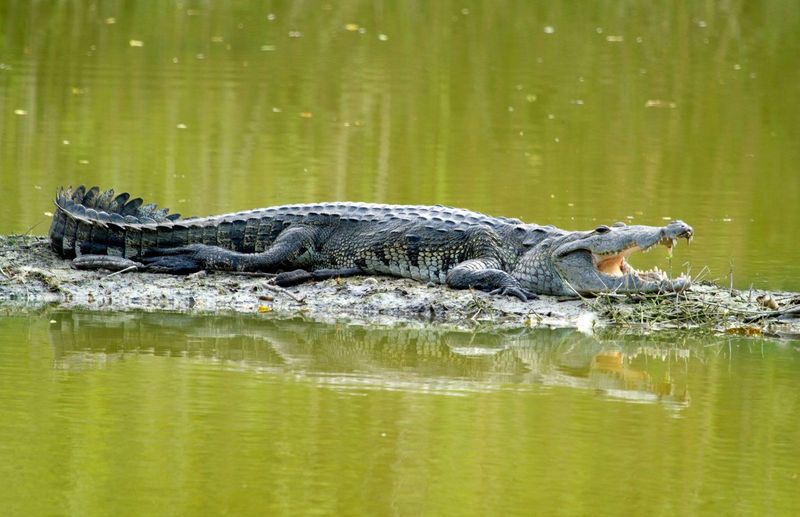
Morelet’s Crocodile has been an unexpected visitor to Louisiana’s swamps, hailing originally from Central America. Picture its sleek body gliding through dark waters, eyes alert for potential prey.
Growing to about 10 feet long, this crocodile prefers fresh water and is known for its secretive nature. Its diet includes fish, birds, and small mammals. The presence of Morelet’s Crocodile in Louisiana intrigues herpetologists, offering a chance to study its behavior outside its typical range.
American Crocodile
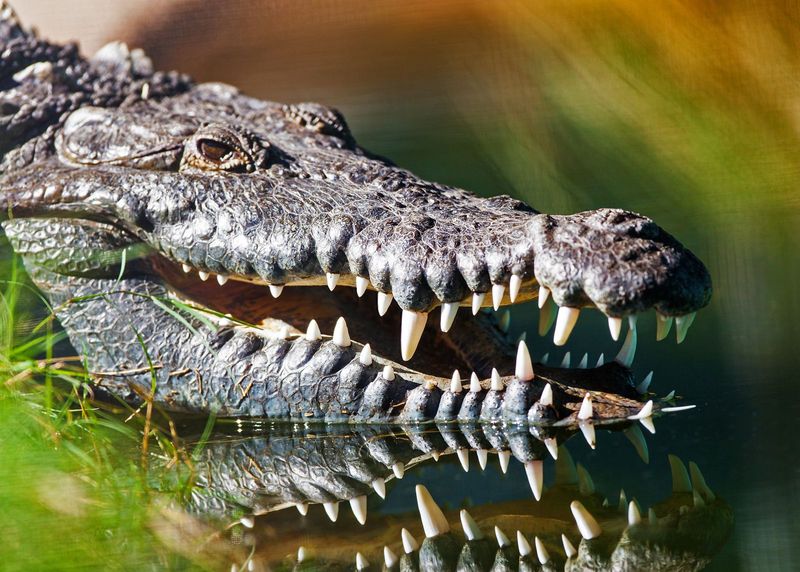
The American Crocodile is a rare but fascinating find in Louisiana’s wetlands. Its long, slender snout and lighter skin differentiate it from the American Alligator.
These crocodiles are typically more shy and prefer brackish waters, where salt and fresh water mix. They can grow up to 13 feet and enjoy a diet of fish and crabs. Conservation programs are vital for their survival, as they face threats from habitat loss and pollution.
Caiman
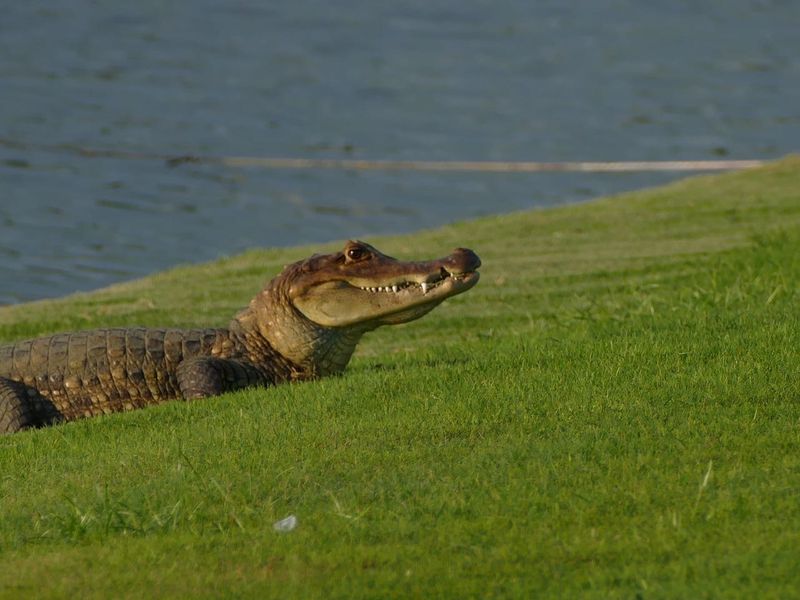
Caimans, though not native, add an exotic twist to Louisiana’s reptilian roster. These creatures, often mistaken for small alligators, can reach lengths of up to 8 feet.
They thrive in freshwater environments, feeding on a variety of fish and amphibians. With their armored skin and sharp teeth, caimans are resilient hunters. Their presence in Louisiana sparks interest, potentially due to pet trade escapes, and highlights the need for monitoring non-native species.
Spectacled Caiman
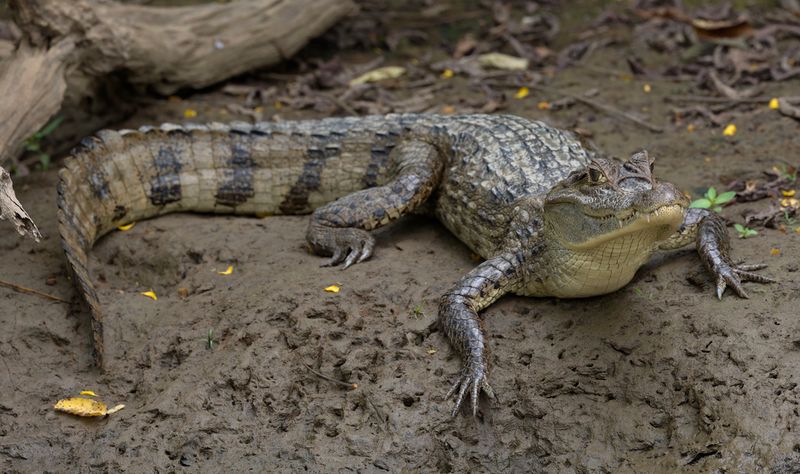
The Spectacled Caiman is named for the bony ridge between its eyes that resembles spectacles. In Louisiana’s wetlands, this reptile is a sight to behold with its rugged appearance.
Typically growing up to 7 feet long, it is well adapted to both freshwater and brackish environments. Its diet is diverse, including insects, fish, and small reptiles. As a non-native species, it presents a curious case study for wildlife experts, emphasizing the impact of species introduction.
Tomistoma
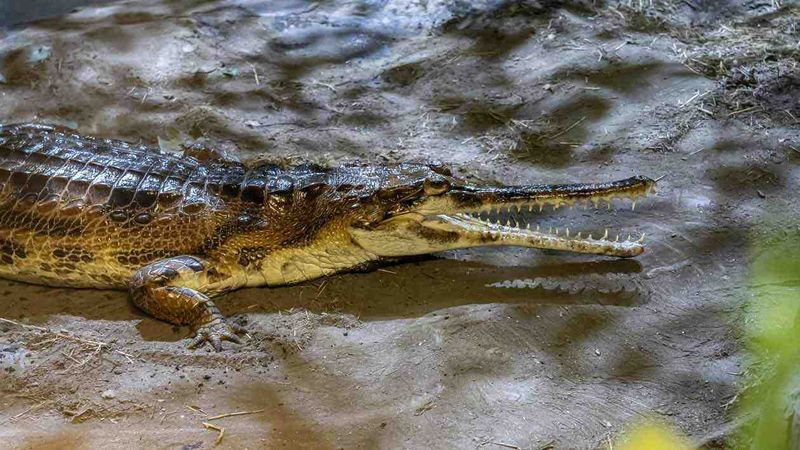
Also known as the False Gharial, the Tomistoma is a rare visitor to Louisiana’s swamps. With a snout longer and narrower than most crocodilians, it cuts an unusual figure.
This species is generally found in freshwater habitats and prefers a diet of fish and small mammals. Measuring up to 16 feet, the Tomistoma is an intriguing subject for herpetologists due to its unique features and distant origins. Its presence in Louisiana remains an enigma, sparking scientific interest.
Dwarf Crocodile
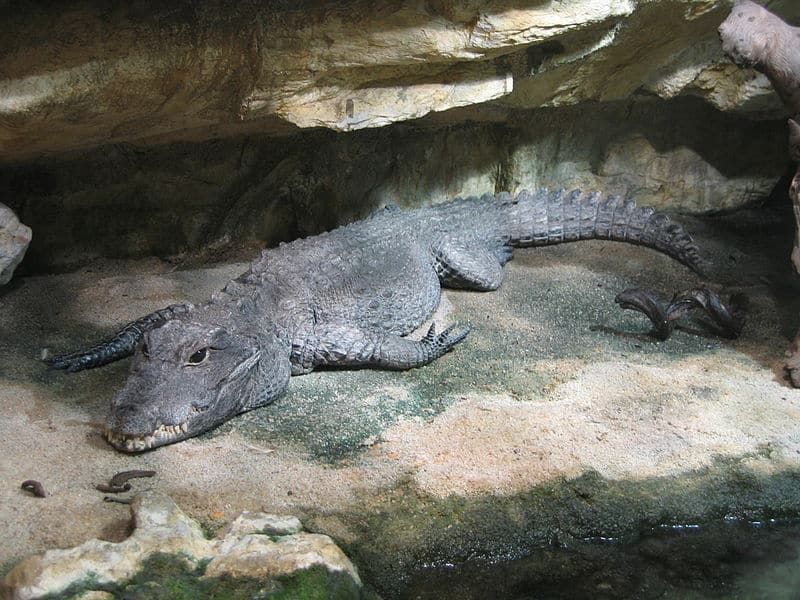
The Dwarf Crocodile is a petite member of the crocodilian family that has occasionally found its way to Louisiana. With a maximum length of about 5 feet, it is the smallest of its kind.
Its bumpy skin resembles a well-designed suit of armor, providing excellent camouflage among the wetland foliage. This crocodile’s diet includes insects and small aquatic creatures. Its elusive nature and small stature make it a fascinating find for those lucky enough to spot it in the wild.
Mugger Crocodile

Originally from the Indian subcontinent, the Mugger Crocodile has made occasional appearances in Louisiana’s wetlands. Known for its broad snout, it can grow up to 13 feet long.
The Mugger is a versatile predator, inhabiting both freshwater and brackish environments. Its diet is diverse, consuming fish, birds, and mammals. This crocodile’s adaptability and presence in Louisiana intrigue scientists, prompting studies on how it adapts to new ecosystems.
Saltwater Crocodile
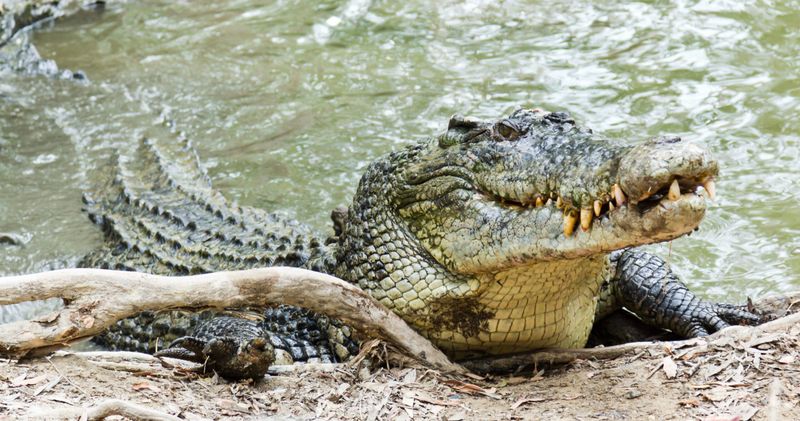
The Saltwater Crocodile is the largest of all living reptiles, occasionally sighted in Louisiana’s waterways. It can reach up to 23 feet in length, making it a formidable presence.
Known for its aggression and strength, this crocodile can inhabit various environments, from saltwater to freshwater. Its diet includes anything it can overpower, showcasing its apex predator status. Sightings in Louisiana raise eyebrows, as they are typically found in Australia and Southeast Asia.
Black Caiman
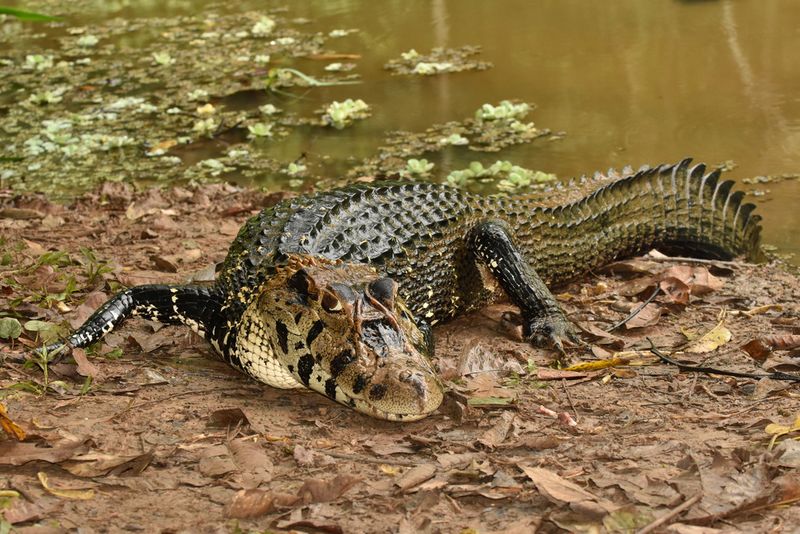
The Black Caiman is an impressive and rare sight in Louisiana’s wetlands, distinguished by its dark, almost black scales. It can grow up to 16 feet long.
As a top predator, its diet includes fish, birds, and mammals. This caiman is often active at night, using its keen senses to hunt in the darkness. Its presence in Louisiana is a subject of fascination for researchers, offering insights into the movement of species and ecological impacts.

